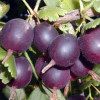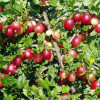Gooseberry: features of planting and care in the Moscow region
Content
The best varieties
In the process of fruitful work, breeders managed to obtain more than one and a half thousand varieties of this culture. Summer residents have the opportunity to plant in the Moscow region any modern, thornless gooseberry variety in spring or autumn. Thanks to the absence of thorns, the subsequent harvesting process is greatly simplified. Next, we will tell you more about the types of gooseberries that are adapted for planting and growing in this region. 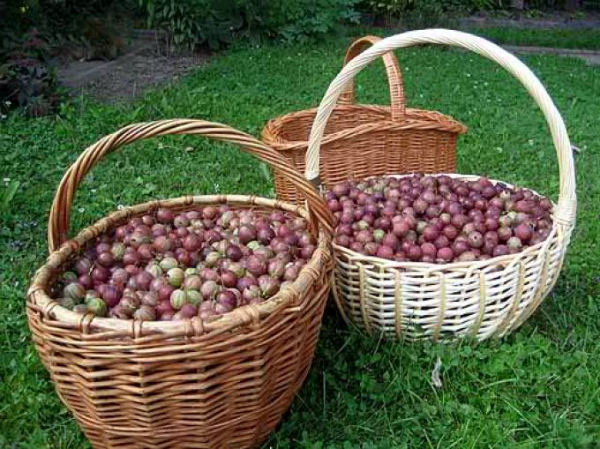 The peculiarities of the local climate are long, harsh winters and few very warm and sunny days. Therefore, each variety is necessarily endowed with such qualities as winter hardiness and a developed root system. Let's talk about which thornless and large-fruited varieties are best planted in your region in spring or autumn.
The peculiarities of the local climate are long, harsh winters and few very warm and sunny days. Therefore, each variety is necessarily endowed with such qualities as winter hardiness and a developed root system. Let's talk about which thornless and large-fruited varieties are best planted in your region in spring or autumn.
Sirius
Berries of this variety have a sweet taste with some sourness. They grow in tassels. Can be eaten both fresh and used for making preserves.
Grushenka
The gooseberry variety has single and almost invisible thorns. The berries are naturally endowed with a beautiful dark purple color and, in appearance, somewhat resemble a pear in shape. They grow in a cluster of several pieces. This species has a high content of useful pectins and has excellent taste.
Northern captain
An excellent variety of gooseberries, from which, among other things, delicious wine is made. This type of beloved berry cannot boast of a great taste, but it is indispensable for wine production. Outwardly, the berries are painted almost black and have a shiny waxy coating on the surface. 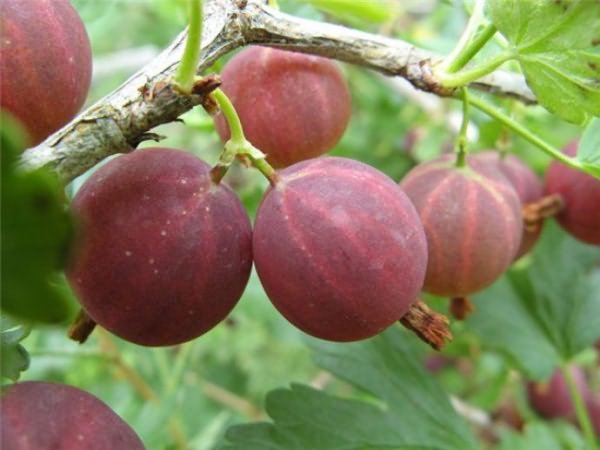 They are arranged in a brush of 3 pieces. The North Captain has advantages such as resistance to fungal diseases and high yields.
They are arranged in a brush of 3 pieces. The North Captain has advantages such as resistance to fungal diseases and high yields.
Ural besshorny
The fruits of this gooseberry variety have a characteristic sweetish taste with a piquant sourness. The shrubs are tall and vigorous. The advantages can be safely attributed to persistent immunity to major diseases, in particular, to powdery mildew.
Russian yellow
A representative of a large-fruited species of favorite berries. The fruits are located on medium-sized bushes with medium-sized and thin thorns. Each fruit is painted in a beautiful burgundy color, weighs about 6 grams and has a sweet tart taste with some sourness. 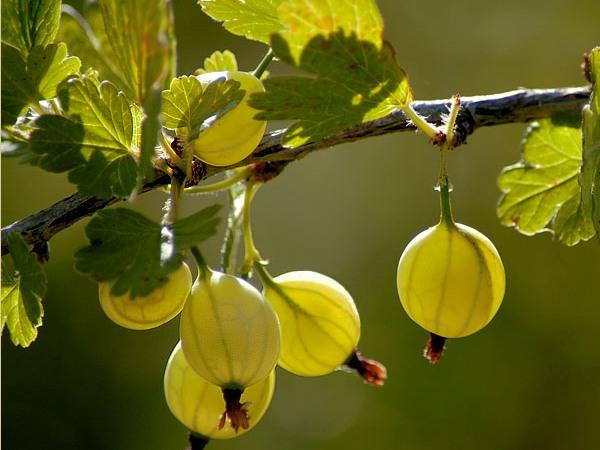 For this type of culture, the formation of a bush is required. It does not require special care, the shrubs can be planted both in spring and autumn, and they also consistently give a rich harvest.
For this type of culture, the formation of a bush is required. It does not require special care, the shrubs can be planted both in spring and autumn, and they also consistently give a rich harvest.
Belarusian sugar
Another large-fruited gooseberry variety. It is convenient for planting on a garden plot of any size, since it is quite compact and squat. Differs in an early fruiting period and good frost resistance.The berries are usually pleasant green in color, weigh about 9 grams each and have a pleasant sweet taste. Belarusian sugar sugar has good immunity to infections and does not need complicated care.
Invicta
An excellent development of English breeders is the result of crossing 3 varieties - a species called Invicta. It is somewhat similar to Russian yellow. Only ripe berries have a yellow-green skin. The leaves are colored light green.  The bush is quite sprawling and vigorous with a lot of shoots. The fruits can be called medium in terms of size. Their ripening period falls in mid-July.
The bush is quite sprawling and vigorous with a lot of shoots. The fruits can be called medium in terms of size. Their ripening period falls in mid-July.
Gingerbread man
This interestingly named shrub is tall and grows very quickly. On the shoots, you can see thin and small thorns. The berries are traditionally colored in a noble dark brown color, have a rounded shape and weigh up to 8 grams each.  The advantages of this type include high immunity and the ability to get a good harvest from each bush. Regular pruning is required for maintenance to increase productivity.
The advantages of this type include high immunity and the ability to get a good harvest from each bush. Regular pruning is required for maintenance to increase productivity.
Hinomaki
These are shrubs of an unusual rounded shape. Their numerous shoots are rather thin and have thorns.
Ripening of delicious berries occurs in early July. They have a deep red color and a rounded shape. The pulp is endowed with pleasant sweetness and sourness. The advantages of this type include resistance to infections (such as powdery mildew), winter hardiness and the ability of fruits to persist for a long time on the bush.
Roland
A gift to our compatriots from German breeding specialists. These shrubs are of medium size and have rather long shoots. On them, oval, dark red fruits with a matte surface ripen, each of which weighs about 5 grams. When consumed, berries give everyone their unforgettable sweet and sour taste and aroma. This gooseberry variety has a consistently high yield.
Neslukhovsky
The result of the work of Ukrainian breeders. It is a vigorous and slightly spreading shrub with straight shoots, which can be planted on your site in spring or autumn.
From it it is possible to collect rounded-oval fruits with a fairly strong skin, which has an average thickness. They have an exquisite dessert taste. The advantages of this type can be safely attributed to its high frost resistance, good immunity, productivity, the ability of berries to stay on the bushes for a long time.
Video "Sorts"
From the video you will learn about the best varieties of gooseberries.
Planting and leaving
Experts advise planting a crop, if possible, in the fall, and not in the spring. Since in this case the shrubs will have the opportunity to strengthen their roots before the cold weather. And then in the spring they will grow and develop rapidly. But you can plant plants in the spring, and not in the fall. After purchase, it can overwinter in damp paper or a pot, being in a room with cool air.
Bushes should be planted where groundwater does not come close to the surface. Loamy, clayey, sandy, sandy loam soil types are suitable for culture. The roots should be spread well. The root collar is deepened into the ground by no more than a couple of cm.
Further, it is advised to make mulch from fallen leaves or peat, then cut the shoots in half.
Care involves spraying the bushes with boiling water from a spray bottle before the first snow melts from the site. Such a care procedure will reliably protect your crops from pest infestations. With the arrival of spring, fertilizing such as manure infusion should be introduced into the soil. The maintenance also includes renewing the existing mulch layer. Since in no case should the earth dry out. The obligatory care of shrubs also includes watering. A garden hose will help you with this. Watering should be done with warm water only.Autumn care involves the introduction of one more top dressing, the role of which is usually played by the mullein infusion. This is necessary to get good flowering and a rich harvest of delicious berries next year.
Pruning
The obligatory care of the bushes also includes autumn pruning. Its purpose is to remove old shoots. If you do not make room for new branches, then in a few years you will get a neglected shrub with small, few in number and tasteless fruits. Therefore, all old shoots should be cut carefully and completely. Giving the bush the opportunity to continue to grow and fully develop.
Fertilizers
To grow quality green matter and roots, your crop needs nitrogen fertilization. Urea and saltpeter will do. The first top dressing is applied when the annual shoots grow up to 5 cm. The procedure is repeated after a couple of weeks. Ammonium nitrate is used in an amount of 70 grams in 3 approaches. For 2 - 3 year old bushes, fertilizing with such a preparation is needed at the rate of 0.3 kg per plant. Half of the fertilizer should be applied in the spring, the rest in May. When spilling top dressing, it is recommended to retreat from the base of the bush about 0.5 meters. 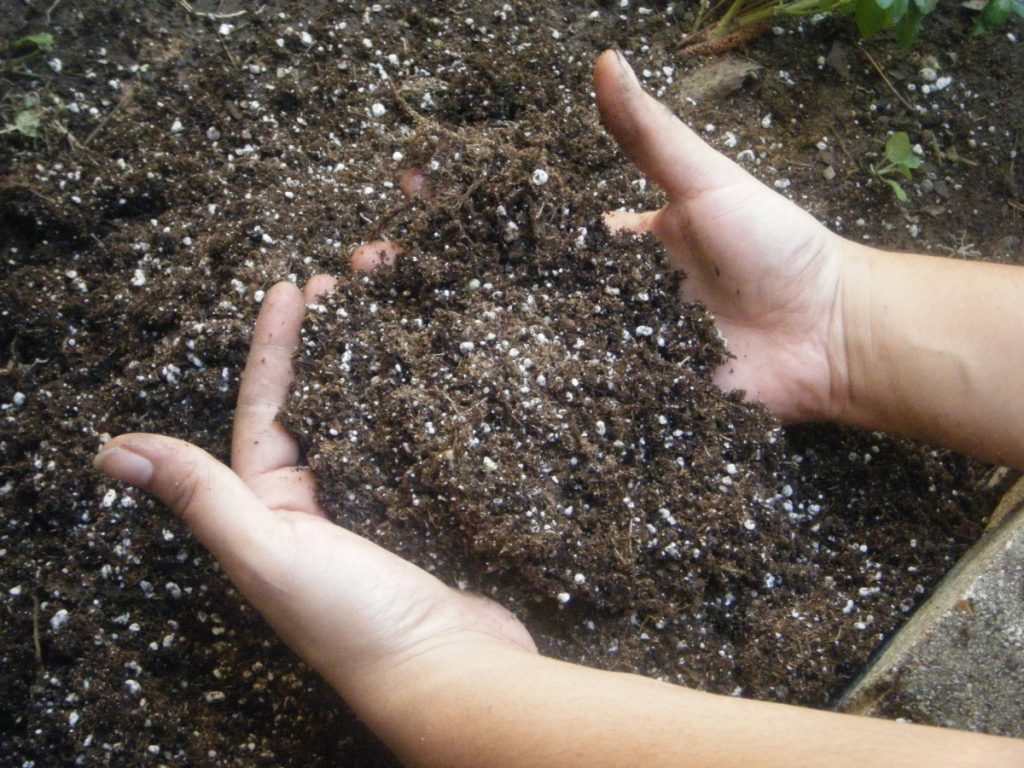 For four-year-old shrubs, it is advised to make phosphorus, potassium and nitrogen-containing dressings. Each bush requires up to 10 kg of rotted manure or compost. It is recommended to use potassium sulfate at the rate of 0.35 kg for each culture and superphosphate, the consumption of which in granules is 0.1 kg. Before the ovaries begin to form and after harvest, your plants will need to add saltpeter.
For four-year-old shrubs, it is advised to make phosphorus, potassium and nitrogen-containing dressings. Each bush requires up to 10 kg of rotted manure or compost. It is recommended to use potassium sulfate at the rate of 0.35 kg for each culture and superphosphate, the consumption of which in granules is 0.1 kg. Before the ovaries begin to form and after harvest, your plants will need to add saltpeter.
Video "Growing"
From the video you will learn about the secrets of growing gooseberries.

